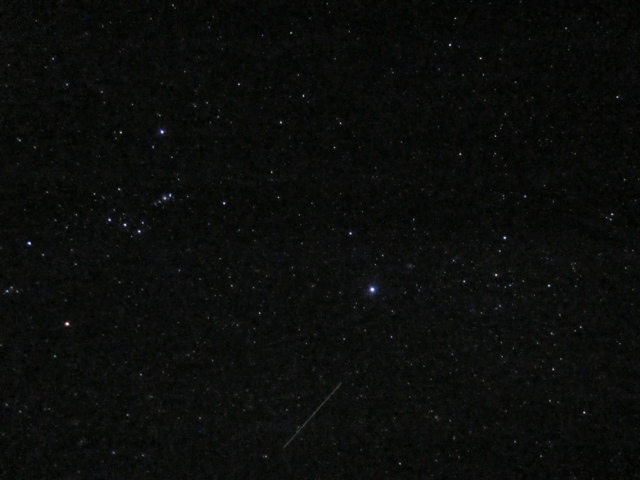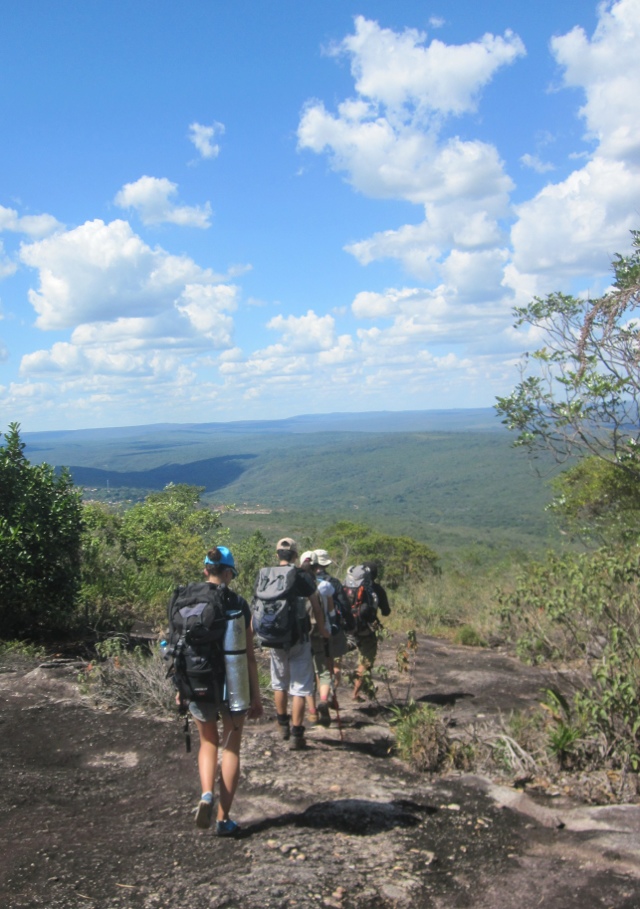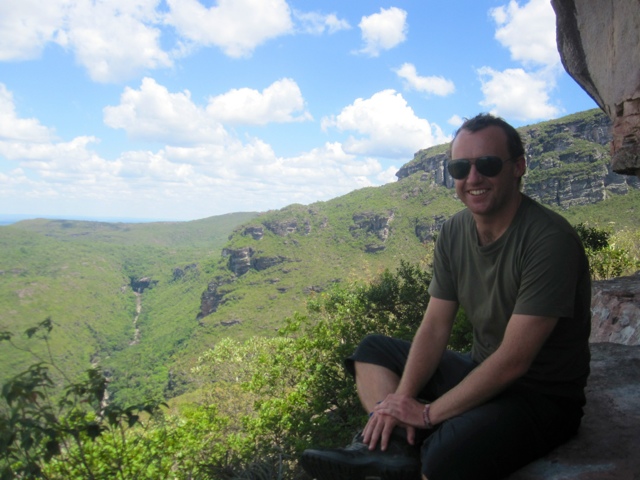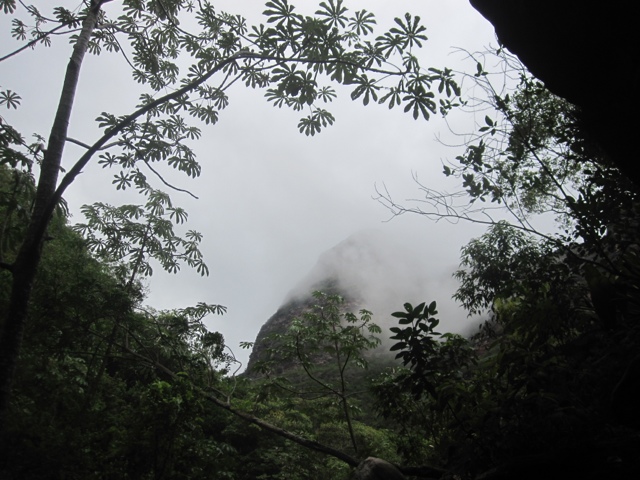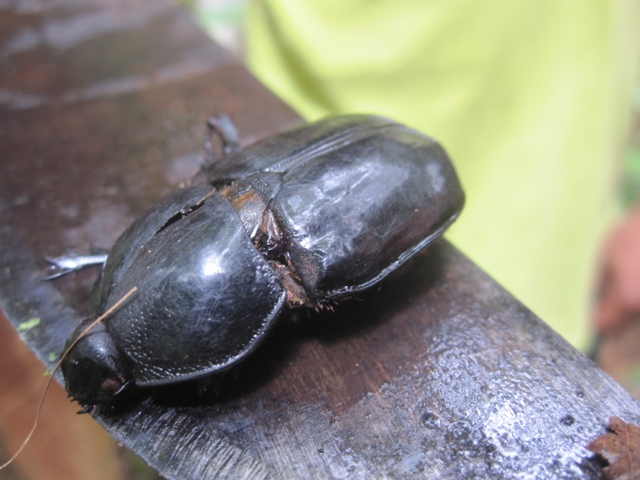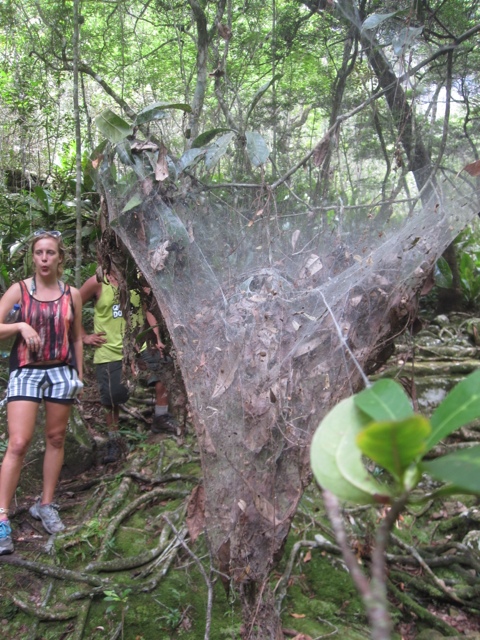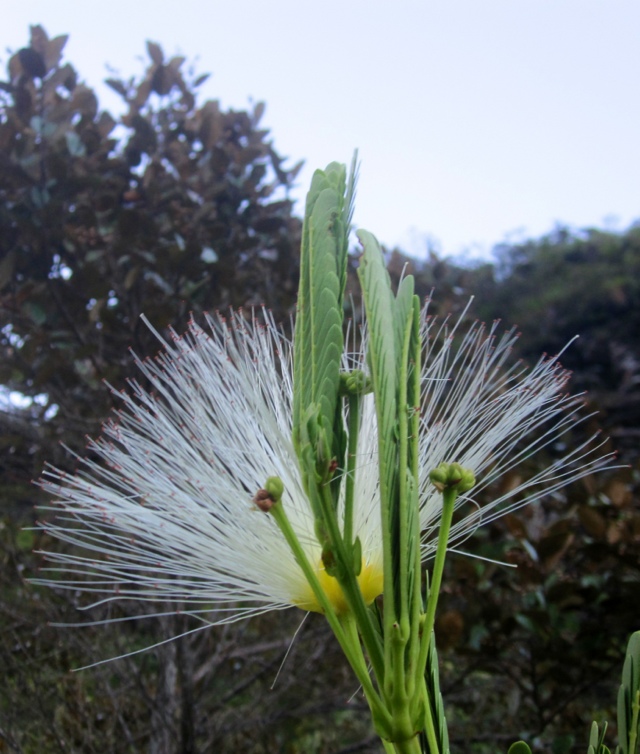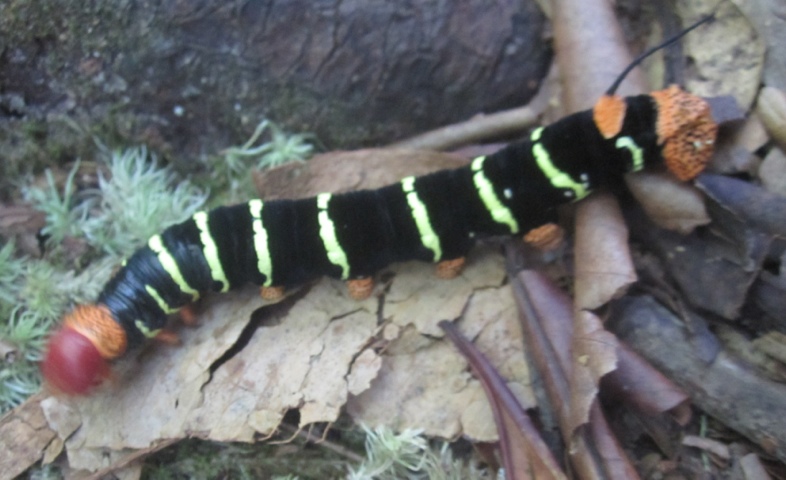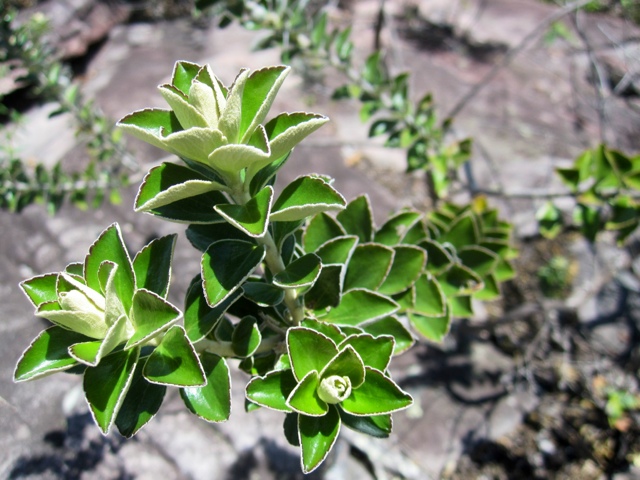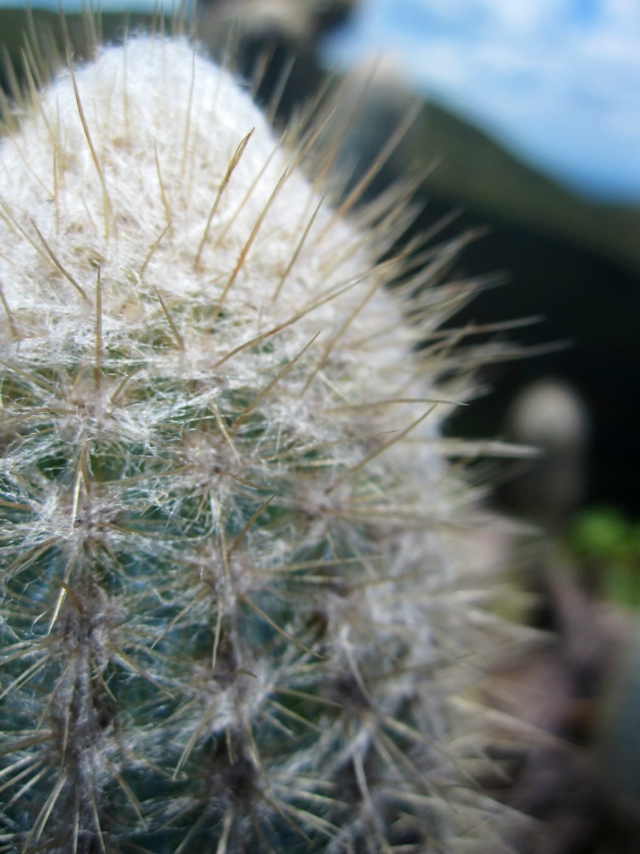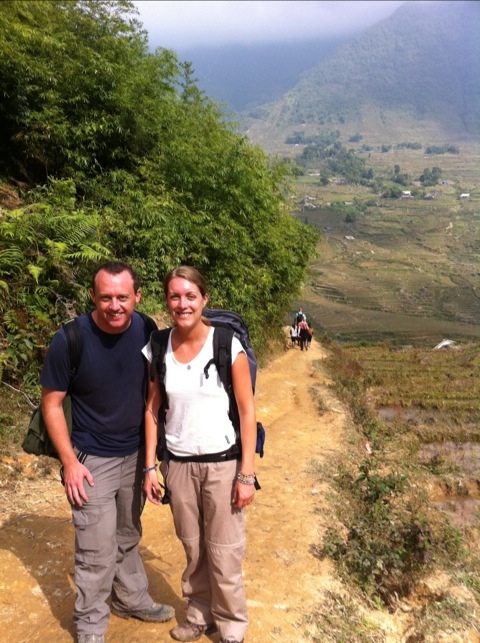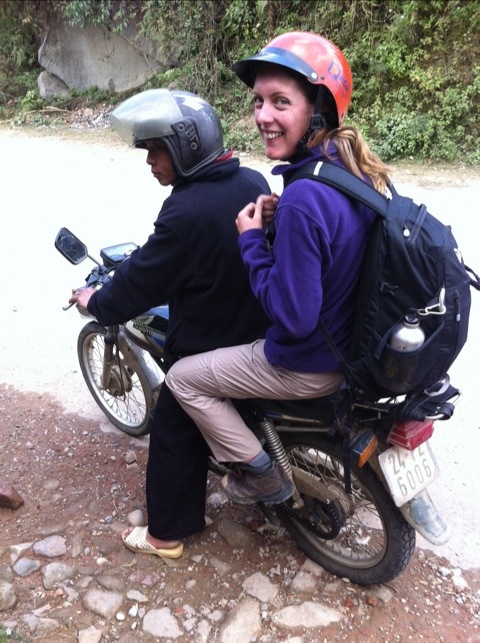After the excesses of Carnaval, we spent a week of respite in the sleepy and peaceful town of Lencois, west of Salvador in the Chapada Diamantina National Park. I remember it fondly from my previous visit to Brazil, and it was great to find it unchanged, a jumble of quiet cobbled streets and brightly coloured houses, with locals hanging out in the shade of the squares and a smattering of tourists ambling around. We stayed at the great Pousada Dos Duendes (which I’m sure Roland will remember too for its hammocks and friendly atmosphere from last time), and soaked up the relaxed vibe of the place.
Our journey from Salvador took us across the Serrato, the desert-like dry belt that divides Brazil’s luscious coastline from its rainforest/jungle interior. As the sun set before us, we were given the beautiful image of desert cacti silhouetted against the emerging night sky, with a stunning crescent moon to complete the picture. Unfortunately the photo I took didn’t quite come out. As the wilderness took over from the bright lights of cities, we also got our first true view of the southern night sky, with the sky so clear we could make out the dusty shape of the Milky Way – and our first chance to try to identify the stars of the southern hemisphere. Southern Cross anyone?
The town has a few short walks that make great day trips along the river, upstream to a set of small waterfalls with pools perfect for lazing around in, and downstream to a natural water slide 20m long, and very very slippery! We both gave it a try (Laura’s even got a video), although not quite to the standard of the locals, who do the whole thing in surfing pose, standing after a run-up!
I decided to continue my walk down memory lane and went on a three day trek to the Fumaça that again featured in our trip of a decade ago. Laura declared herself ‘lazy’ and went for the option of some day trips instead – although it sounds like she still did a lot. The Fumaça is Brazil’s highest waterfall, (currently only a trickle) falling some 380m to a pool in the rainforest below. Once you’ve climbed all the way up to the plateau in the burning midday heat, the view over the national park is fantastic, complete with permanent rainbows from the water being blown back upwards. ‘Fumaça’ means ‘smoke’, and as the water falls and turns to mist, it’s easy to see why. A large boulder overhangs the drop, and as you can see below, it makes for some great photos!

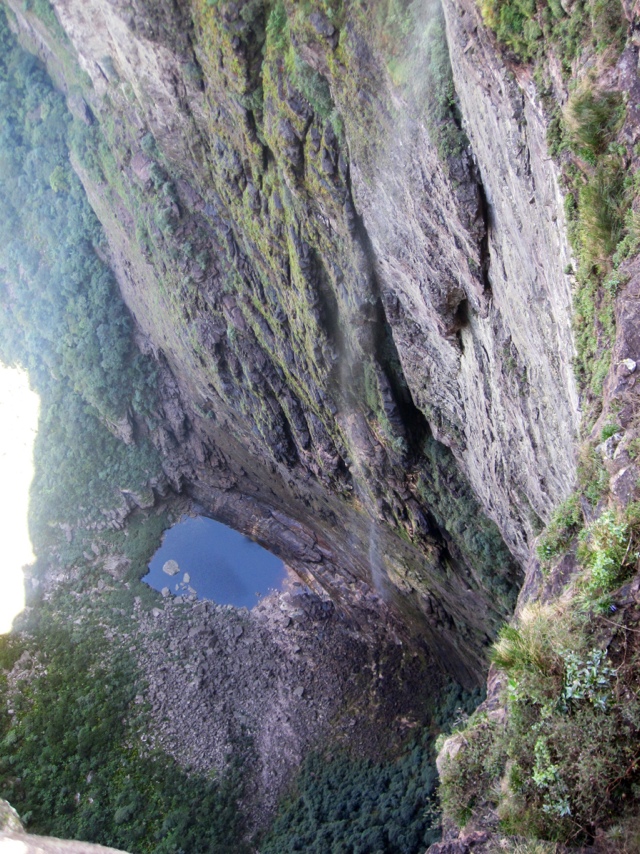
Looking down the falls, you can just about see the rainbow. We trekked through the jungle to that pool below.
Due to some transport issues, we were doing the trek in reverse, starting at the top of the waterfall and working our way back to Lencois. It’s a pretty gruelling 3 days of walking, and very slow going at times due to some of the group we were with not really being fit enough for a difficult combination of walking, scrambling and bouldering in the heat – and with a few vertigo-inducing spots too. Still, we had a great set of lively people, with a group from Austria marking a birthday along the way (complete with cakes, candles and cocktails), and some interesting conversations about censorship in China courtesy of some Googlers now living in Singapore.
Every few hours we stopped to take a dip in a natural pool along the way, the water in the area a strange blood-red colour, giving everyone the appearance of having a tan – and as we had to drink it too, us the sense of being vampires. On the second day we scrambled our way along the moss-covered riverbed to the base of the falls, where a beautifully cold pool welcomed us, and we had the fantastic view of the rainbows of the falls from below. There’s something very refreshing seeing something so dramatic from both the top and the bottom (without the use of a lift!), and we all enjoyed the moment sitting on the rocks under the falling cascade.
It was a wonderful escape, a perfect break and some time to experience the raw beauty of unadulterated nature. We had with us a geologist who was able to provide a commentary on the strata of the rock formations before us (they’re very old, and brittle as they’ve sheared rather than tilted over time), as well as a diverse range of travellers to keep the conversation entertaining. The rock-lined valleys were also great for echoes, with the various (intentional) animal noises made by the group as we went along rebounding repeatedly. The first night we finished walking after dark and with the moon already below the horizon, went swimming by torchlight. It was magical, gazing up at the stars above us, and then looking around to discover the forest was alive with the blinking yellow of fireflies surrounding us. Reflections on water are often stunning; even more so at night after a long day’s walking!
At night we slept out in the open on rocks by the river, retreating into a cave on the only time it rained heavily. Our home for the second night brought back a strong memory for me; it’s a strange thing sitting down a couple of days walk from the nearest town in the middle of nowhere and finding the exact rock you slept on ten years before! Next to the outcrop forming our beds was a small waterfall falling into a pool perfect for a shower – although not one you wanted to float too far out of as there was a much bigger plunge and lake just a little further downstream!
On our final afternoon, we stopped for lunch on a rocky mound with a stunning view over the National Park with its waterfalls below us and the plains and fields of the Serrata beyond. It was one of those moments when you have to stop and just gaze in silence: the waving trees of green on the ground, the bright blue of the sky, and the hundreds of white puffs of cloud drifting through it, their clearly identifiable dark shadows uniting above and below. Now this is why I came travelling!




